My 1993 400E power steering fluid was leaking from the day I purchased my car, back in August of 2014. Over the last 5.5 years/26k mi I had to add a total of 4/5 of a quart of MB steering fluid. My indy says it's the pump, but as I understand from reading on the forum, oftentimes it's a hose between reservoir and the pump (#47 on the diagram), so I'd like to try that first...
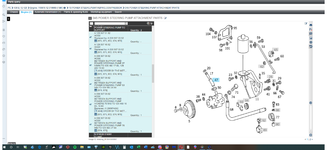
Questions:
1. I think - I will double check - my pump is made by Vickers, so I'll be getting part #A0069970982. Xentry portal has two entries for this part #. What do highlighted in orange notes mean? Why are there 2 entries for the same part #? I'm just getting acquainted with using EPC.
Thanks!

Questions:
1. I think - I will double check - my pump is made by Vickers, so I'll be getting part #A0069970982. Xentry portal has two entries for this part #. What do highlighted in orange notes mean? Why are there 2 entries for the same part #? I'm just getting acquainted with using EPC.
47 A 006 997 09 82
HOSE BETWEEN SUPPORT AND POWER STEERING PUMP VICKERS 76 MM; TO 129 460 16 80, 18 80
Replaces: A1299974682
[404] ORDER BY THE METER [970, 971, 972, 974, 975]Quantity: 1 47 A 006 997 09 82
HOSE BETWEEN SUPPORT AND POWER STEERING PUMP 76 MM; TO 129 460 27 80
[974, 975]
Thanks!

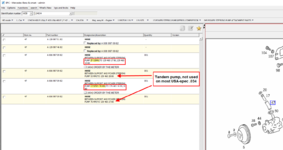









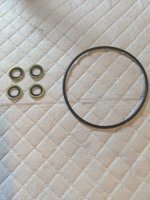

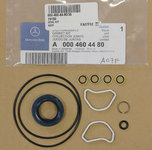
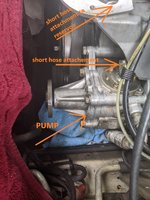



 . You can see in the very first picture above that the pump is held by the 4 bolts. Once unbolted you just pull the pump straight out and replace a few seals (last pic in the post #23 above) on a workbench. Again, it was easy even for rookie such as myself. You'll need a reseal kit #179 in the above diagram. I'm not giving you a part # for #179 as diagram shows info for my specific VIN. If you give me yours I can look up the correct part # for your pump.
. You can see in the very first picture above that the pump is held by the 4 bolts. Once unbolted you just pull the pump straight out and replace a few seals (last pic in the post #23 above) on a workbench. Again, it was easy even for rookie such as myself. You'll need a reseal kit #179 in the above diagram. I'm not giving you a part # for #179 as diagram shows info for my specific VIN. If you give me yours I can look up the correct part # for your pump.

